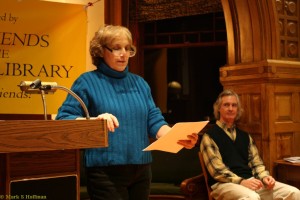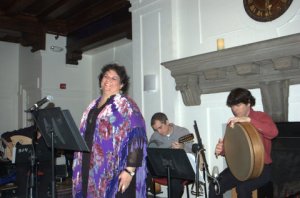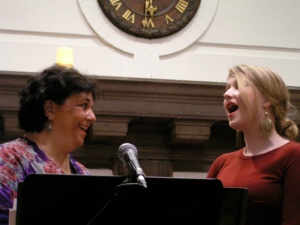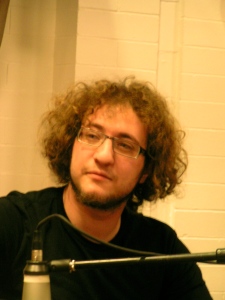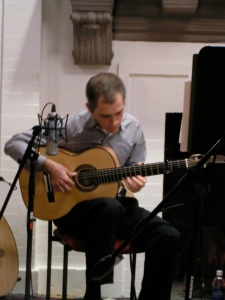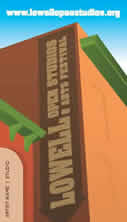Letter to my landlord:
The super said he has them in his apt and so does the office manager but he’s from abroad and she grew up on a farm and they don’t mind trapping them. I was very upset when the first three got stuck in the gooey trap Cl gave me and the baby one cried.
The new ones are not attracted to the cheese I put out as bait in the “roach motel” traps where you don’t have to look at them. Not sure if Cambridge mice are smarter than others or if they just sniff at low -fat feta. EEEK. The guy just ran from under the fridge to under the stove, a foot from where I’m typing.
A friend who used to live in the building said a former super blocked off all holes, which stopped them–but she was able to pull out her stove and refrigerator. Could you please ask D. to have Cl. do that? If not that, could I get an OK to ask Cl to come up to deal with any mice that get caught in gooey traps? I hate to bother him but I just can’t handle it.
My cat people friends say their animals either just play with mice or rip them up and leave the body parts lying around. DK which is worse. Yes, I do, Lisa says.
None of the cats seem to travel….and one named Claire, wrote in to explain why she won’t be available (her comments are included below).
Should I just give the mice names and adopt them as pets?
This morning a woman came into the Charles Hotel while I was having coffee…with a dog that was only a little bigger than these mice.
I am trying to think of them as giant hairy cockroaches but cockroaches don’t cry.
Eeeeeeek!
Please advise.
Anita

Claire

Compliments of an Australian client...
Dear G….The mice are freaking me out. I think there are three more…ot at least 2. In the last 24 hours, a big one and a small one have come from under the stove and the refrigerator…and the sink….and the other day one came out from behind the sofa in the living room. I’m guessing they’re living around the pipes.
We welcome your comments–and hope you’ll subscribe.
Dec. 17
Thanks, Gus.
My downstairs neighbors don’t have them…yet…nor do others on my floor. My cousin says that the smell of cats deters them. I could try that…might be able to borrow one from a friend who has one for a week or so. Unfortunately, the smell of cats also deters me….
Last night, the master of Quincy House said they had an infestation there this fall and called in “Best Pest;” they patched holes and set traps, which cleared up the problem. Anita
12/17
Dec. 18
Gus, someone left four sticky traps outside my door. I’m collecting advice on my blog… so far, it ranges from wearing a cat costume to sprinkling dried coyote urine around….Eeeew. Anita
Oh my! If you want to stay at our house for a couple of days, or work in my office until they get rid of the mice, you’re more than welcome. I’d be freaked out too. I hate having uninvited critters sharing my space.
Re: Eeeeek!
Edna, thanks–I appreciate it. The guy who owns the building said he can’t do anything because if he poisons them they will go into the walls and smell bad…I’m asking friends if I can borrow their cats….It’s kind of funny when I think about it…But not when they scoot around, here. Evidently, it’s a common problem. The super says HE has them, and so does the woman who works in our office…but they’re not bothered by them (or by killing them). A friend told me that her husband had to keep mouse traps under his desk at the New York Times… Another friend’s said he sees them at MGH…Eeeeek! I’ll let you know if I need a place to stay…. tho I think that the landlord or the building owner, should pay for a hotel.
Anita
From Ann: Alas, no. My cat is not a traveler: extremely shy and won’t come out when people she’s known for years come to visit! Also I can say (sadly) from experience she’s not a mouser: she’d rather chase, play, batter and torture a mouse than dispatch it.You might borrow a terrier- they’re bred as ratters and can snap a neck so fast you won’t see it.
OR, try my strategy:get some brown paper sandwich bags. bait the traps and set them inside the bags. Check the traps, and roll the whole mess up in the bag and dispose (outside cans). No mess, less fuss and you keep your hands clean.
Dec. 19 From Lisa: GaaROOOsome!! I didn’t see a single one at your b-day party! When I was at Simmons, the two things that worked were: 1. peanut butter to attract them; 2. steel wool pads to block their entry. The problem w/ having a cat is that you’ll then have dead mice all over the house. Don’t know which is worse. Well, yes, I guess I do.
Saturday Dec 19 At Haymarket, I told the cheese vendor that the mice won’t touch his low fat feata. He told me to forget the cheese. “Use pate,” he said. (Well, this IS Cambridge).
Sunday Dec. 20:
Last night, I was watching TV when a little dark brown one ventured from behind the sofa (again). I jumped; he jumped back. I got up and opened a box of sticky traps. Put them in big Trader Joe’s paper bags, which I laid out near the sofa and stove. This morning: nothing. Eeeeeek!
—-amh
Thursday, Dec. 24. Still nothing. I’m hoping that its being Christmas eve, not a creature will be stirring…not even…
Monday, Dec. 28
Last night, returned from weekend away. Nothing in gooey or “hotel” traps, despite non-fat cheese. Bought “bounce” per Judy’s suggestion– put sheets of this fabric softener under sofa, stove, fridge; smelled so bad I had to put it in a ziplock bag to store. Saw mouse scurry out of closet toward corner wall, so put one in there, too. This morning, nothing in traps; my eyes watering, sore throat due to Bounce smell–so forget that. Today I am calling the health department.
January 7, 2010
Dear g:
Yes, [50 F… ]is still a great building but, FYI, we’ve had no heat or hot water for two days. Evidently there were 7 pipe leaks and there’s still a problem with the boiler. Someone put up a sign saying they’re working on it, which I believe because the first floor is completely torn up. We have to climb a small mountain of dirt to get to the mail boxes! For awhile, this morning, the elevator was out of service…
RE mice…only one, so far this week (perhaps the others have retreated into the walls to stay warm). I called the Cambridge health department, which said that the property owner is required to bring in an exterminator…Would it be OK if I bring one in, have him find and block the mouse holes in 512 and you bill [D] for the service?
Thanks, Anita
FOR MORE COMMENTS AND ADVICE, or to add them, please click on comments, just below.


